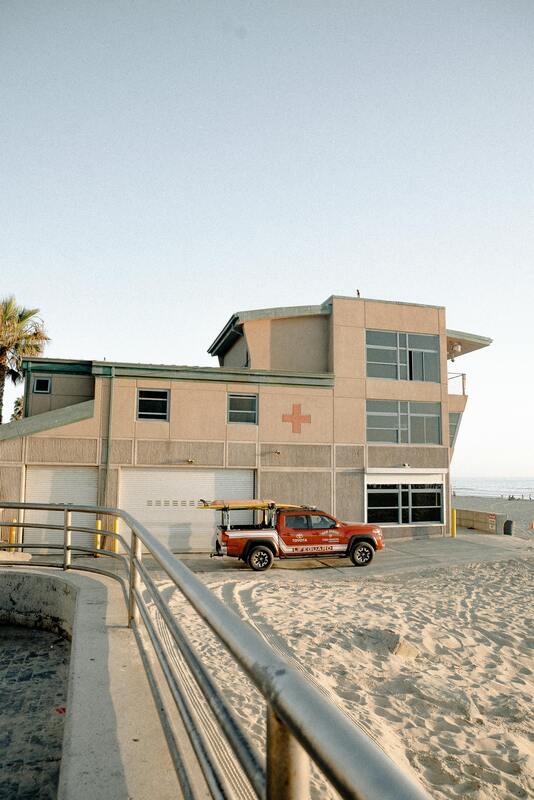|
Employee engagement ensures healthcare professionals are comfortable and committed to the delivery of quality and safe patient care. This approach influences a facility’s success, operational efficiency, and public image. Investing in a highly engaged workforce has several benefits for healthcare facilities.
A highly engaged workforce has low turnover rates. Involving healthcare professionals in a facility’s major decisions and valuing and implementing their feedback improves job satisfaction, ensuring the organization does not lose its talented workers to other hospitals. Retaining these professionals also means facilities save the resources necessary to recruit and train new workers. Engaging caregivers also improves productivity and efficiency. A highly engaged workforce has fewer incidences of absenteeism and is motivated to meet and surpass individual and collective objectives. Additionally, engaged employees take responsibility for effective resource utilization, which is important in improving the access to care. In addition, engaging healthcare workers promotes continual improvement. Caregivers who are comfortable and committed to their work are motivated to find innovative solutions to problems in care delivery. These employees can effectively push for the adoption of new technologies and practices that improve care safety and patient outcomes.
0 Comments
Diversity and inclusion are key policies that promote full participation and fair treatment of all people in a facility, including workers and patients from underrepresented populations and those subject to prejudice. These practices address healthcare inequalities, improve patient outcomes, enhance caregivers’ productivity and job satisfaction, and increase employee retention rates. Several strategies can promote diversity and inclusion in healthcare environments.
One such approach is leveraging leadership to champion diversity and inclusion initiatives. Healthcare leaders should develop clear diversity and inclusion objectives for a facility, and negotiate for adequate resource allocation to ensure success. Leaders should also lead by example in implementing these initiatives by exhibiting behaviors and making decisions that advocate for diversity and inclusion. In addition, education and training can promote diversity and inclusion. Healthcare systems and facilities should introduce periodic seminars and workshops to inform workers about diversity and inclusion, its benefits, and the role everyone plays in achieving these objectives. These resources can impart important information on cultural competence, unconscious bias and how to avoid it, and inclusive practices in care delivery. Diverse recruitment and hiring practices are also critical to promoting inclusivity in health care. Facilities should hire a workforce with a fair representation of professionals from different backgrounds. This is achievable through the use of inclusive job descriptions, ensuring diversity within recruitment panels, and using standardized interview tests and questions to reduce bias. In February 2024, Christus Health announced receiving the "Great Place to Work" national certification. This renowned certification is earned based on the feedback and reviews of current associates regarding their work experience at a particular place. During the announcement, the faith-based nonprofit global health system expressed deep gratitude for achieving this certification.
Ernie Sadau, the president and CEO, stated in a press release that receiving this prestigious certification marks a significant milestone for the health facility and reflects the high quality of care demonstrated by current associates toward patients. Sadau emphasized Christus Health's unwavering commitment to upholding core values such as compassion, excellence, integrity, dignity, and stewardship. He praised the associates for their exceptional efforts in ensuring patients receive the best possible experience at the health facility. A random survey conducted across the Christus Health Organization revealed that 80 percent of respondents agreed that Christus Health is a great workplace. This figure is approximately 15 percentage points higher than the qualifying benchmark for the certification. The "Great Place to Work" certification underscores Christus Health's ongoing and deliberate efforts to enhance employee experience consistently. In healthcare organizations, the position of Chief Financial Officer (CFO) has significant influence over financial health, operational efficiency, and strategic decision-making. Both the CFO and the CEO cooperate to ensure healthcare settings run smoothly.
A Healthcare Chief Financial Officer is responsible for the organization's financial health, an aspect of the business that can and will affect every department, every employee, and every patient. CFOs work closely with the CEO. Beyond financial acumen, successful CFOs exhibit creativity and resourcefulness. They possess the ability to devise comprehensive cost-saving strategies, explore new revenue streams, and foster a culture of fiscal responsibility across the organization. Moreover, effective communication skills and strong leadership qualities are indispensable, enabling CFOs to forge cohesive, collaborative relationships with stakeholders across disciplines. In an era marked by technological advancements and evolving cybersecurity threats, CFOs must remain vigilant in safeguarding financial stability. Collaboration with IT leadership is essential to develop robust cybersecurity protocols and allocate resources effectively. By integrating cybersecurity considerations into strategic planning, CFOs can mitigate risks and ensure the organization's resilience in the face of potential threats. Healthcare management encompasses a comprehensive framework that spans organizational leadership, resource allocation, quality assurance, and patient care delivery. Adhering to best practices can help healthcare organizations deliver superior care and maximize operational efficiency.
Recruiting skilled professionals with expertise in healthcare management is essential for driving organizational success. By assembling a team of knowledgeable individuals, healthcare organizations can leverage diverse perspectives and skill sets to navigate complex challenges effectively. Harnessing the power of data analytics enables healthcare providers to gain valuable insights into operational performance, patient outcomes, and resource utilization. By continuously monitoring and analyzing data, organizations can identify areas that need improvement and tailor informed decisions to optimize patient care. Developing comprehensive strategic plans aligned with organizational goals and patient needs is essential for guiding healthcare management initiatives. By setting clear objectives and priorities on a regular basis, organizations can focus their efforts on initiatives that will have the greatest impact on patient care. Prioritizing patient well-being in all decision-making processes is key to building trust. By putting patients at the center of care delivery, organizations can ensure that their efforts are aligned with patient needs and preferences, ultimately driving satisfaction and loyalty. Employee engagement measures the degree of motivation and passion that workers have for their work. It is an easy way to determine how emotionally connected employees are to their jobs and co-workers. Employee engagement can be a strong force driving productivity in an organization, emphasizing its importance. There are various ways to improve employee engagement in an organization.
One of the key ways to increase employee engagement is by prioritizing feedback. Employees often take feedback from their managers quite seriously, and the manner in which the feedback is communicated can affect the employee’s engagement level. It is important for managers to communicate feedback in the most constructive way and through the appropriate channels to increase employee engagement. Another effective way to improve employee engagement is to convince workers that the company prioritizes their physical and mental health. Seeing clear signs that the organization is making efforts to ensure one’s overall well-being can encourage an employee to become engaged and motivated in their work. The company can achieve this by sponsoring team-building activities or offering health bonuses and gym subscriptions to encourage healthy lifestyles outside the workplace. Providing employees with the right tools they require to perform their tasks efficiently can also be a good way to boost employee engagement. Not having access to the right tools can make workers lose interest in their jobs. However, when the company makes a point to provide them with the right tools, they often feel motivated to do their best. At the end of 2022, about 50 percent of healthcare-related businesses operated in the red, including hospitals. Therefore, companies in the healthcare sector must adapt and find ways to run more efficiently and maintain a steady calendar of patient appointments.
Advancements in technology have changed daily life for people. Some patients expect hospitals and clinics to offer modern and improved services. Therefore, organizations benefit from modernizing operations and improving the patient experience. Next, healthcare organizations benefit from establishing telemedicine services. Telemedicine uses digital means to improve the interactions between patients and their doctors. With telemedicine, patients can avoid making hospital trips for minor issues like prescription renewals and health monitoring. Instead, doctors can fulfill the requests and services via live chats and video calls. In addition, hire the right staff who maintain a patient-centric and professional demeanor. The right team complements investments in high-quality equipment and highly trained doctors. Finally, healthcare businesses can post educational content online since over 80 percent of modern patients research online before making appointments. Provide patients with resources that help them solve minor health issues but encourage them to see doctors or make telemedicine appointments for significant concerns. The healthcare landscape is going through a period of change influenced by technological advances, evolving patient needs, and rising healthcare costs. This transformation drives healthcare organizations to acquisitions and ventures to stay at the forefront of innovation.
Mergers, acquisitions, and partnership ventures allow healthcare organizations to reduce administrative costs and improve supply chain management. Acquisitions provide healthcare organizations access to established businesses with proven cost-effective strategies that allow experimenting with innovative solutions and technologies. Other benefits of acquisitions and partnership ventures include enhanced revenue cycle management and improved care coordination. Acquisitions and partnership ventures help healthcare organizations adapt to evolving patient needs. For example, hospital mergers provide a means to offer a wider range of integrated and coordinated care for patients. Health organizations can also acquire telehealth platforms to give patients convenient access to care from their homes. Since startups are often at the front line of technological innovations, partnerships with these companies allow healthcare organizations to offer services like digital health tools, data analytics, and online platforms, leading to better patient care. On July 3, 2023, Louis and Peaches Owen Heart Hospital at CHRISTUS Trinity Mother Frances became the first hospital in Texas to successfully implant the Optimizer Integra CCM-D System into a heart patient. The new dual cardiac device treats patients with heart failure symptoms.
The implantation was part of a clinical trial by Impulse Dynamics. Researchers are using the trials to evaluate the efficacy of the Optimizer Integra CCM-D System, which concurrently treats arrhythmia and heart failure. The device leverages two therapies: cardiac contractibility modulation, which improves the heart’s condition, and a defibrillator, which corrects arrhythmias. The design enables the device to lessen symptoms of the two conditions, enhancing quality of life. The battery life, as long as 20 years, reduces the need for additional procedures. Researchers will collect data from 300 patients at 75 healthcare facilities in the United States over two years to test the device. CHRISTUS Health has a long history of supporting medical research into groundbreaking therapies. The cardiovascular care team at the Louis and Peaches Owen Heart Hospital has been recognized as a national leader in clinical trials for over two decades. CHRISTUS Health, a global faith-based health system, announced the opening of a new state-of-the-art corporate headquarters in Irving, Texas. The new headquarters will be based in a 15-story building on a 4.2-acre parcel in central Las Colinas.
A Catholic health ministry, CHRISTUS Health is a leader in designing innovative health and wellness solutions. It ensures that individuals and communities live healthy lives and experience the power of God’s healing. According to Ernie Sadau, CEO and president of CHRISTUS Health, the new facility is part of the organization’s 150-year journey of serving communities across Texas, New Mexico, and Louisiana, as well as Chile and Colombia in Latin America. The 460,000 square feet tower, which is located next to a 10-story parking garage, will host approximately 2000 CHRISTUS Health Associates, who shall be engaged in coordinating various organization activities. Previously, CHRISTUS Health used a leased facility, but an increase in associates necessitated the construction of a new facility. Since CHRISTUS Health rented corporate offices in Las Colinas more than a decade ago, the number of associates working for the health system has increased from 30,000 to 50,000. Additionally, the number of people impacted by CHRISTUS Health has grown from 3.8 million to 7 million. Irving Mayor Rick Stopfer expressed his joy to have CHRISTUS Health within his community, considering the vital role it plays in enhancing Christ’s healing ministry by transforming people's lives daily. |
AuthorPaul Generale - 22 Years of Leadership with CHRISTUS Health. Archives
January 2024
Categories
All
|









 RSS Feed
RSS Feed
